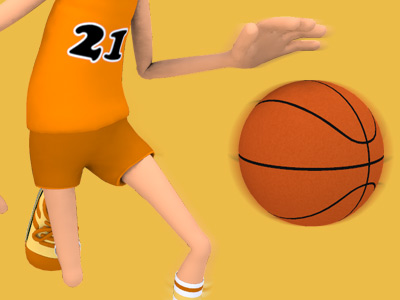Basketball

Basketball Euro Step
The Euro step or Eurostep, is a term for a basketball move in which an offensive player picks up his dribble, takes a step in one direction, and then quickly takes a second step in another direction. It is intended to allow the offensive player to evade a defender and attack the basket.
Background
According to New York Times writer Jonathan Abrams,
The move is a crafty way to distribute the two steps allocated to a player after he stops dribbling, and it goes right to the edge of being a traveling violation.
Anecdotal reports indicate that officials not familiar with the move may call it a violation. Today, the Euro step is often used when a player drives to the hoop, and it can be especially effective when a shorter guard takes on a taller forward or center.
History
Developed in European basketball, the move is generally accepted to have been brought to the NBA by Lithuanian Šarūnas Marčiulionis, though there is footage of Elgin Baylor performing a similar move in an early-1960s game, possibly before Marčiulionis was born, as well as Julius Erving in a 1974 ABA playoff game, and Archie Clark in a 1972 ABA vs. NBA All-Star Game, and was popularized in North America by Manu Ginóbili, an Argentine who arrived in the NBA from the Italian league. It has since been adopted by many American-born players, among them James Harden, Dwyane Wade and Rajon Rondo, as well as Slovenian point guard Goran Dragić and French center Rudy Gobert. Noted college coach John Calipari is also known for teaching the move; among his former players who frequently use the move in the NBA are Derrick Rose, Tyreke Evans, and John Wall.
SPORTS

RESOURCES
This article uses material from the Wikipedia articles "Basketball" and "Euro step", which is released under the Creative Commons Attribution-Share-Alike License 3.0.
© Stories Preschool. All Rights Reserved.












